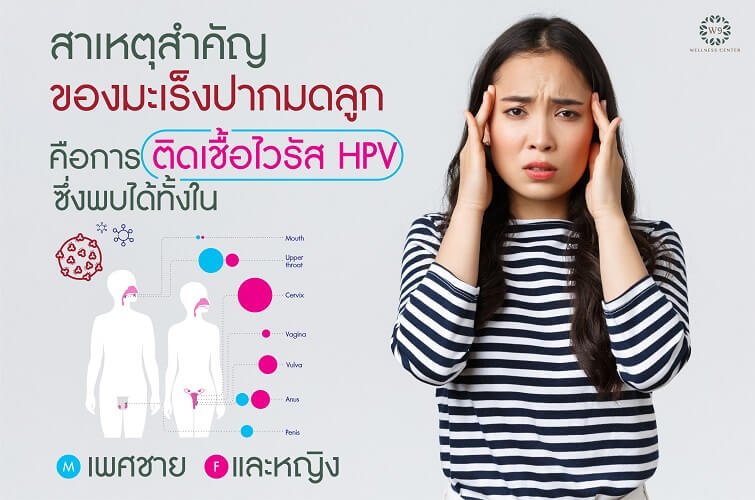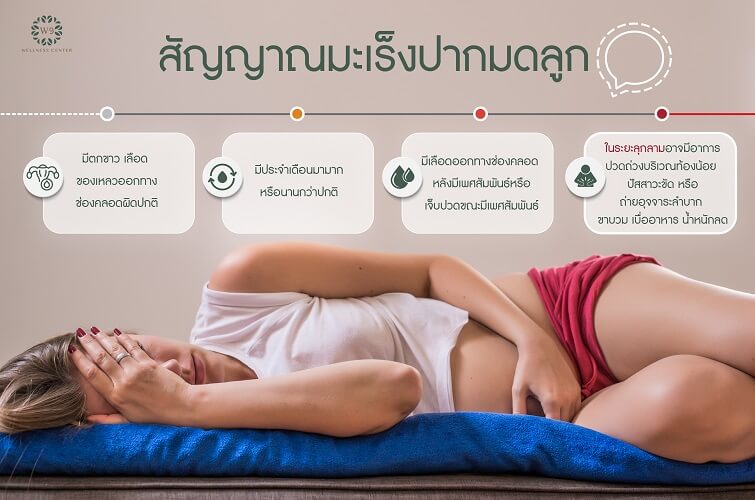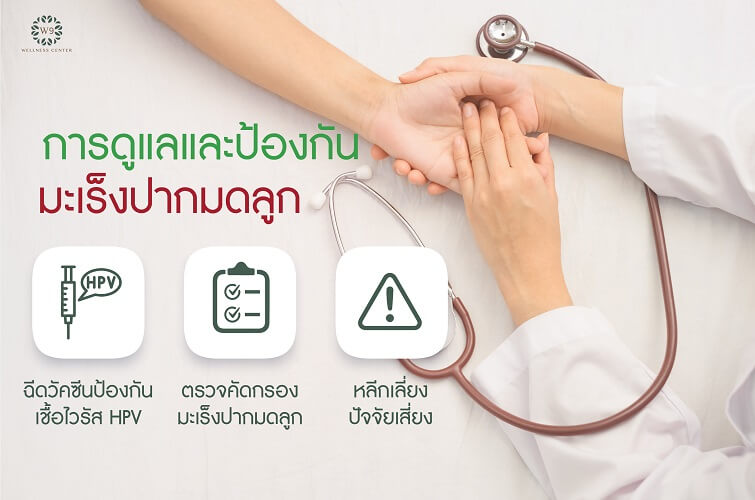
According to statistics in 2020, cervical cancer was found to be second in Thai women after breast cancer. More than 9,000 new cases are found per year and 4,700 die per year, or every day up to 13 Thai women die from cervical cancer, despite the fact that cervical cancer is a cancer that can be prevented. And most often this disease is found in women around 40 years of age.
Source: SIRIRAJ ONLINE

“I'm still young and my body is still strong. I have only one partner.” I believe that many women may be thinking like this. and consider themselves not at risk for cervical cancer and there is no chance of getting this disease But do you know that the important causes of Cervical cancer is an infection with the HPV virus It can be found in both men and women. 80 percent of Thai women have had HPV or currently have it but don't know it. This is because HPV infection often has no symptoms. and a general medical examination did not find any abnormalities.
The most common cause of cervical cancer is infection with HPV (Human Papilloma virus), which is transmitted to other people. obtained from sexual intercourse In the life of a woman, she may have been exposed to this infection. But the body can get rid of it. And there are some parts that cannot be eliminated. Including other risk factors That causes changes in the tissue around the cervix and causes various diseases such as genital warts, cervical cancer, and others.

Normally, most patients with pre-invasive cervical cancer do not have any symptoms at all. In some cases, there may be more vaginal discharge than normal. Therefore, it is necessary to have an internal examination. and receive cervical cancer screening Those who deserve testing are women who have had sexual intercourse. They should get checked once a year, while people who have never had sexual intercourse should get checked when they are 35 years of age or older. For patients with advanced cervical cancer, symptoms such as excessive vaginal discharge may sometimes have an odor. And there was blood in the blink of an eye. In addition, there may be bleeding after intercourse, etc. If you have these symptoms You should consult a gynecologist to quickly detect abnormalities.


Currently, cervical cancer and precancerous lesions caused by HPV infection It can be prevented with cervical cancer screening. Because regular cervical cancer screening will help reduce the spread of abnormal cytology. which may turn into cervical cancer without showing any signs of illness at all Cervical cancer screening Testing begins at age 25 for women who have had sex or 30 years for women who have never had sex.
Did you know that about 80 percent of people infected with this virus will recover on their own within 2 years through the body's immune system? But in the case that this virus does not disappear or cannot be eliminated Such infections may cause precancerous stages. and develop further until becoming cancer. Therefore, cancer screening starts at stage zero. Therefore, it can prevent disease.
“When we can prevent HPV infection, we can prevent cervical cancer.”
contaminated food Hormone contamination in food, especially meat.
Know your face, don't know your heart. It is still a word that defines getting to know someone very well, especially the first "lover".